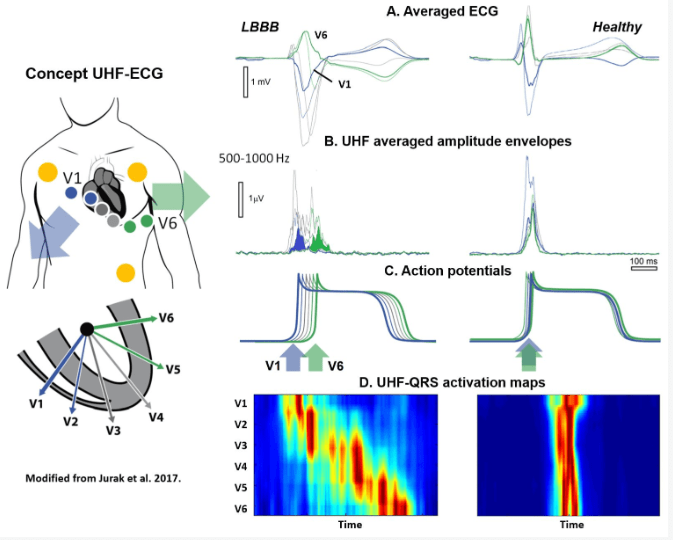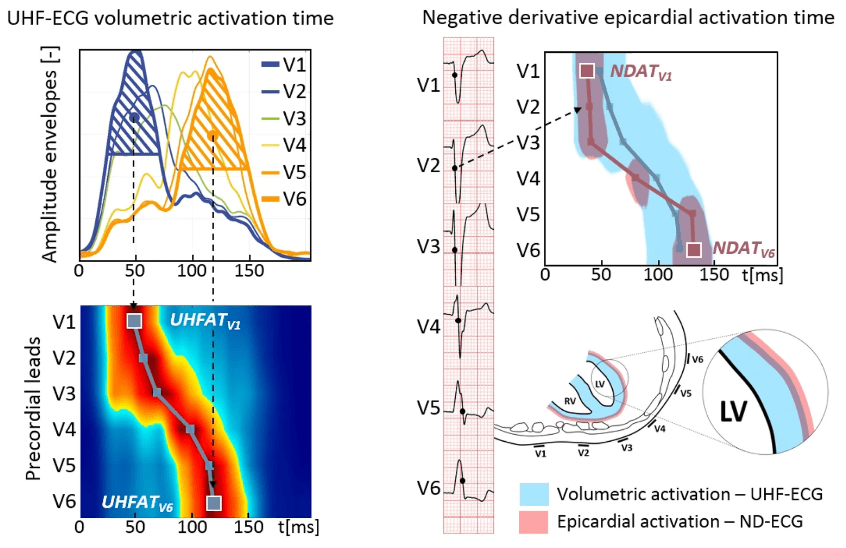

Synchrony imaging matters
Great EP LAb Digest publication about UHF-ECG technology
Ultra-High-Frequency ECG in Cardiac Pacing and Cardiac Resynchronization Therapy: From Technical Concept to Clinical Application
"UHF-ECG can determine a tailored resynchronization approach for the optimization of CRT and holds promise beyond CRT for the risk stratification of ventricular arrhythmias." by Uyên Châu Nguyên et al.

Ultra-high-frequency ECG volumetric and negative derivative epicardial ventricular electrical activation pattern
"Combining new UHF-ECG with conventional ND-ECG offers a more comprehensive analysis of heart activation throughout the muscle wall compared to using just one method." by Pavel Leinveber et al.

VDI Technologies featured on TV
Ante Anic and Frits Prinzen discuss the most innovative current and future technologies.
On-time stamps1:30 & 3:00 they both highlight, namely UHF-ECG.
Non-invasive Conduction System Pacing guidance
Regular 12(14)-lead ECG with real-time visualization
It could not be easier ...









